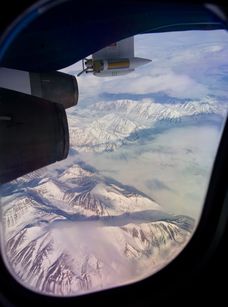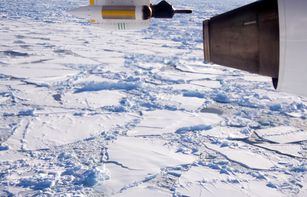

|
|
|||
|
|
|||
|
|
|||
|
|
|||
|
|
|||
|
|
|||
|
|
|||
|
|
|||
 |
|||
Tuesday 6th - Barrier Winds |
The strongest winds in the entire Northeast Atlantic (that's the North Atlantic north of Iceland) are the winds between Greenland and Iceland, in the fearsome Denmark Strait. During winter the winds are predominantly from the north, and channeling down the fjords of Greenland, the sharp temperature differences along the edge of the sea ice, and the huge barrier that is the Greenland mountains, all work together to make these unpleasant waters by any standard. In a terrible northeasterly storm during the Easter of 1952, seven Norwegian sealing vessels went down. Five of these were never found, and a total of 79 sailors lost their lives. Furthermore, on 9 April 1933, a wind gust of 163 knots was recorded on the island of Jan Mayen, one of the strongest winds ever measured by conventional means. |
||||
After a successful barrier-winds flight on Monday, the team of scientists flew into a northerly jet on Tuesday with a wind speed of 45 m/s (around 90 knots). The winds near the sea surface are rarely that strong, mainly due to frictional effects. |
||||

